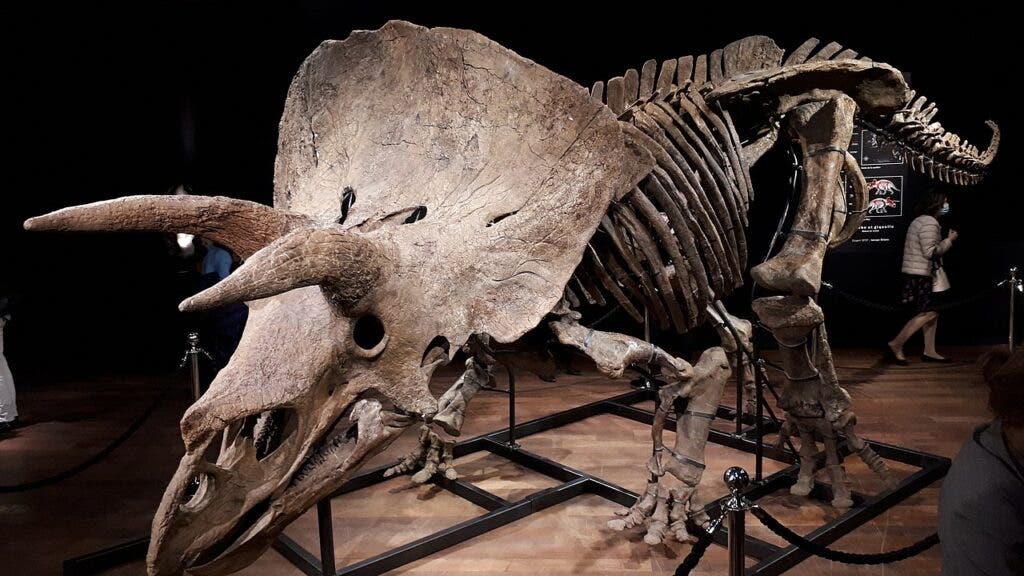The largest triceratops skeleton ever found, a specimen christened “Big John”, has been sold at an auction in Paris for a record price: €6.65m ($7.74m).

Big John was unearthed in South Dakota, US, in 2014, and it was a stunning discovery indeed. It is the largest example of its species to have ever been discovered, and around 60% of its bones were recovered at the site, making it a relatively complete skeleton.
Big purchases
After being re-assembled by specialists in Trieste, Italy, the skeleton was put up for display at the Drouot auction house in Paris last week. The buyer, a private collector from the US who chose to remain anonymous, said through representatives that they were “absolutely thrilled with the idea of being able to bring a piece like this to his personal use”.
Triceratops were tri-horned, plant-eating dinosaurs who lived during the Cretaceous period some 66 million years ago. Their fossils are quite rare, complete specimens even more so, and complete triceratops skulls are exceedingly rare. This, alongside the size, makes Big John definitely stand out among other fossils of its kind.
The fossil was found in an area that, during the Cretaceous, was a floodplain. Its body was quickly encased in mud after the animal died, which helped preserve it. While researchers found no indications of exactly what led to the dinosaur’s death, there are signs of damage on the skull. The working theory so far is that Big John, despite his size, had been defeated by another dinosaur in battle.
The sale does, however, call into discussion the ethics of commercializing dinosaur fossils. Demand from private investors is already leading to an increase in the price of fossils, one which museums around the world are struggling to match. There is a very real risk that at some point, museums might not be able to afford fossils to showcase altogether.
The high price fetched by Big John makes this trend painfully obvious.






